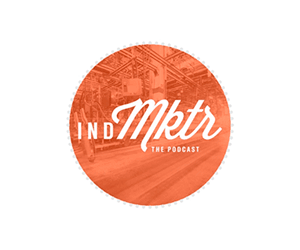Workforce recruitment marketing continues to be wicked hard for manufacturers and industrials these days. Heck, it’s hard for pretty much everyone. Prospects have many choices, and they know how to find openings and conduct quick research to see if a job description and company is of interest to them.
The good news is that your workforce recruitment messaging can be incredibly simple in approach. Just tell people why they should want to come work with you at your facility and why they will want to stay.
The tough part is if:
- You haven’t done a good job on your website career page of explaining what you do, how you make a difference in the world, and what you have to offer to new employees. If someone is going to be disappointed when they click through a link on social or a job posing, you have work to do on your website.
- Worse, you have gaps in your workplace culture and are not an employer of choice. Honestly, if that’s the case, it’s time for some tough love with leadership about how to acquire and retain the workforce of the future. (If this is the case, your leadership probably knows it based on current retention issues and difficulty in filling openings.)
Recruitment Strategies: Communicate Your Truths
We could write books about workplace strategies, and we encourage you to do your own diligence in this area. But here are a couple of great reminders about how to align your recruitment strategies with your messaging. Be honest and transparent in all of your communications with prospects and new hires. After all, they have many options.
- Know Your Audience – There is no magic solution in recruitment, so when it comes to whether you should use a particular tactic, the answer is likely to be yes, and use others as well. Don’t be afraid to try “talent matching” technology and gamification. And look in new places. The state of Ohio has linked several companies in the plastics and polymers industries to people leaving prison through the Training Assessment Placement Project. You also should rethink your old hiring rules. For example, many employers still use a credit check to help guard against theft. But you may scare away potential candidates who are dealing with credit issues.
- Build a Culture That Begin with Onboarding – Ever had a new employee leave for his or her first lunch break and never come back? Of course you have. Almost every company has had “a runner” in the past two years. Lisa Pustelak of the Northwest Industrial Resource Center has written an excellent article about how your retention program begins the minute a new employee enters the building, and you should have a plan for the first day, first week, and first 90 days. It might not be what’s wrong with these extremely short timers that is driving them away. It might be what they are running from.
Let’s look at the key questions you need to answer as you craft your workforce recruitment messaging.
What is Your Purpose? Why Come Work for You?
Young people want to make a difference in the world. They want to be part of something bigger. Your workforce recruitment messaging should align with that, and it should be on your own website.
You are part of the local economy and some industrial sector. Tell your story with pride.
You supply something essential. If someone is machining parts for medical devices, they are providing a key element to the healthcare industry. If you are in the electric vehicle supply chain, you are helping remake the domestic manufacturing sector and reducing the carbon footprint. If you are making parts for recreational equipment, you are helping bring joy to someone.
You are providing a great career and a living wage to people in your community. You are helping people raise families and sending kids to college. You are making a difference in many peoples’ lives. Don’t be shy about sharing these inspiring aspects of your business.
What Is Your Workplace Culture? Why Do People Stay?
David Rea of Catalyst Connection in Pittsburgh wrote an excellent article about workplace culture, not only what it looks like but also how to build it within your company. Essentially, if people are your most valuable asset, then you will have a people-focused operation. Check out the article.
Another important reason why people stay at their jobs is that they see a career path. They understand they will not be doing the same tasks and will have opportunities for advancement in responsibilities and pay. Every manufacturer could show prospects and new hires different paths to a career. A great way to do this is to use your employees as examples. Let co-workers tell their stories via video about their many years of experience and why they come to work every day. Have employees talk about what they like about the company. Share stories of pride throughout your organization.
Be transparent about employee perks and benefits. This is another area in which you can only brag on what you have. If your set of perks and benefits are not competitive within the local market, let your leadership know.
Listen to the Podcast for More on Workforce Recruitment Messaging
For more insights into the key elements of industrial workforce recruitment messaging, tune into the latest episode of the Industrial Marketer podcast.
Subscribe to the Industrial Marketer Podcast
The Industrial Marketer podcast comes out once a month. To subscribe, visit our Buzzsprout show page and select your podcast platform of choice.
And if you have any ideas for topics you’d like us to cover on the podcast — or here on the Industrial Marketer website — send us a message on Facebook or Twitter and let us know!




